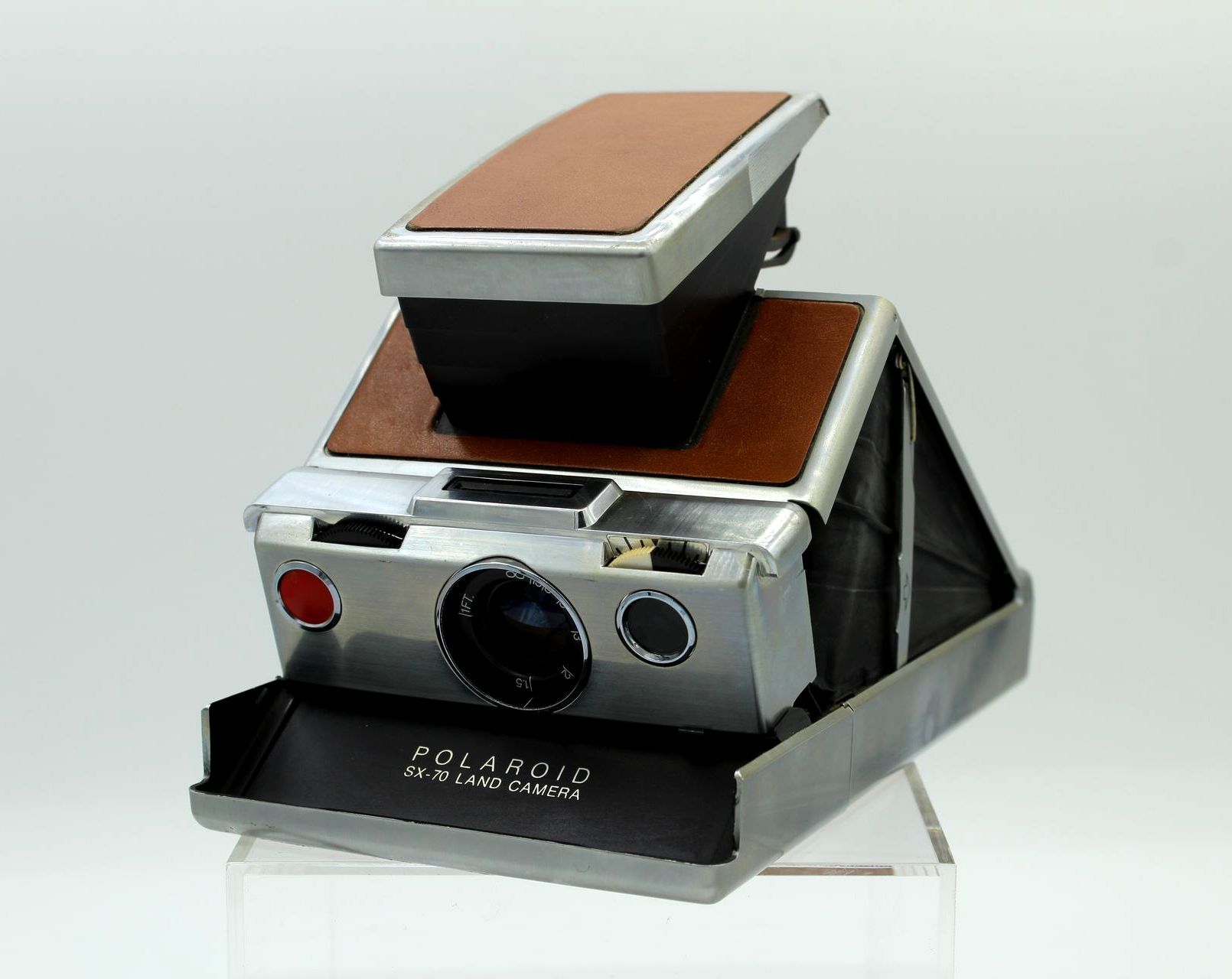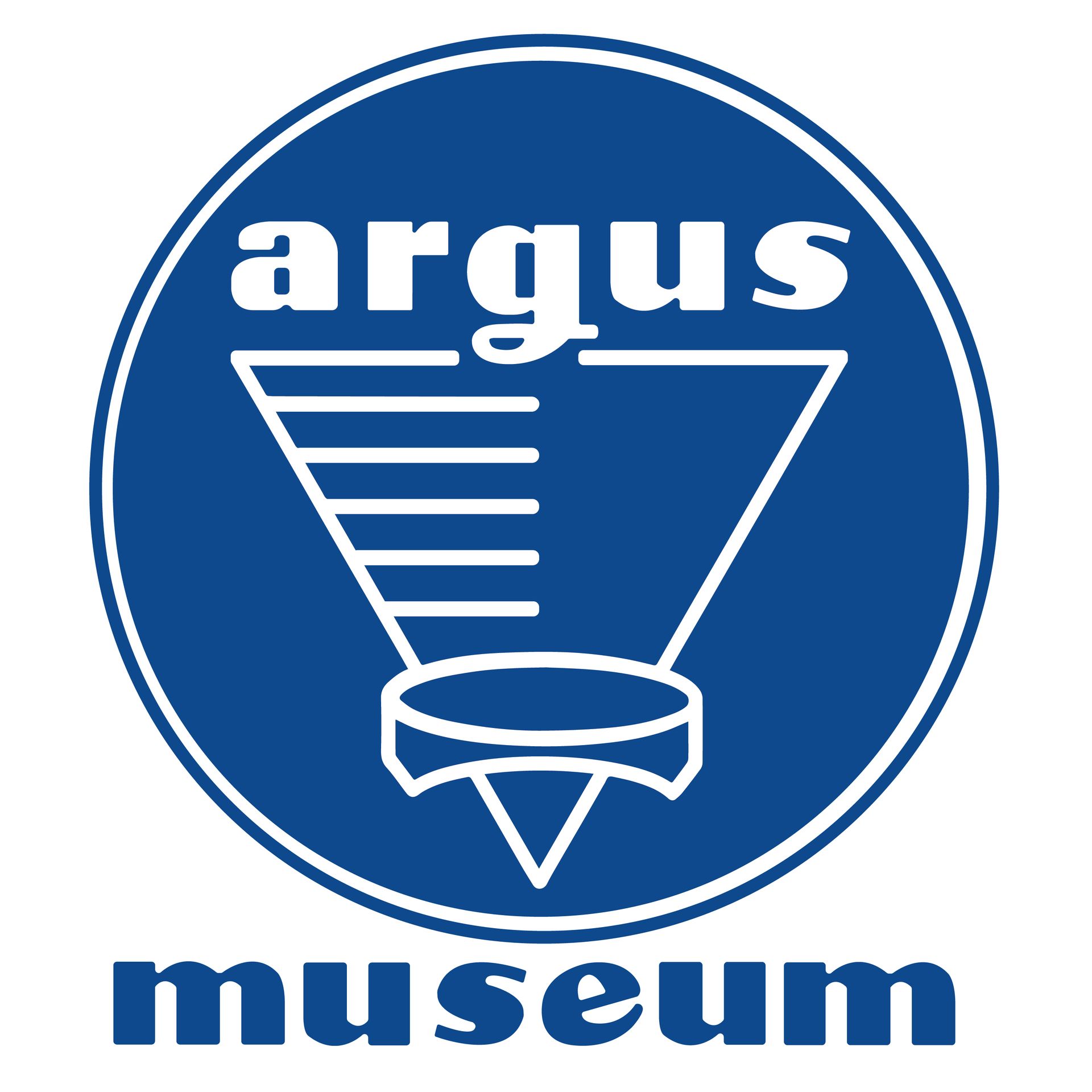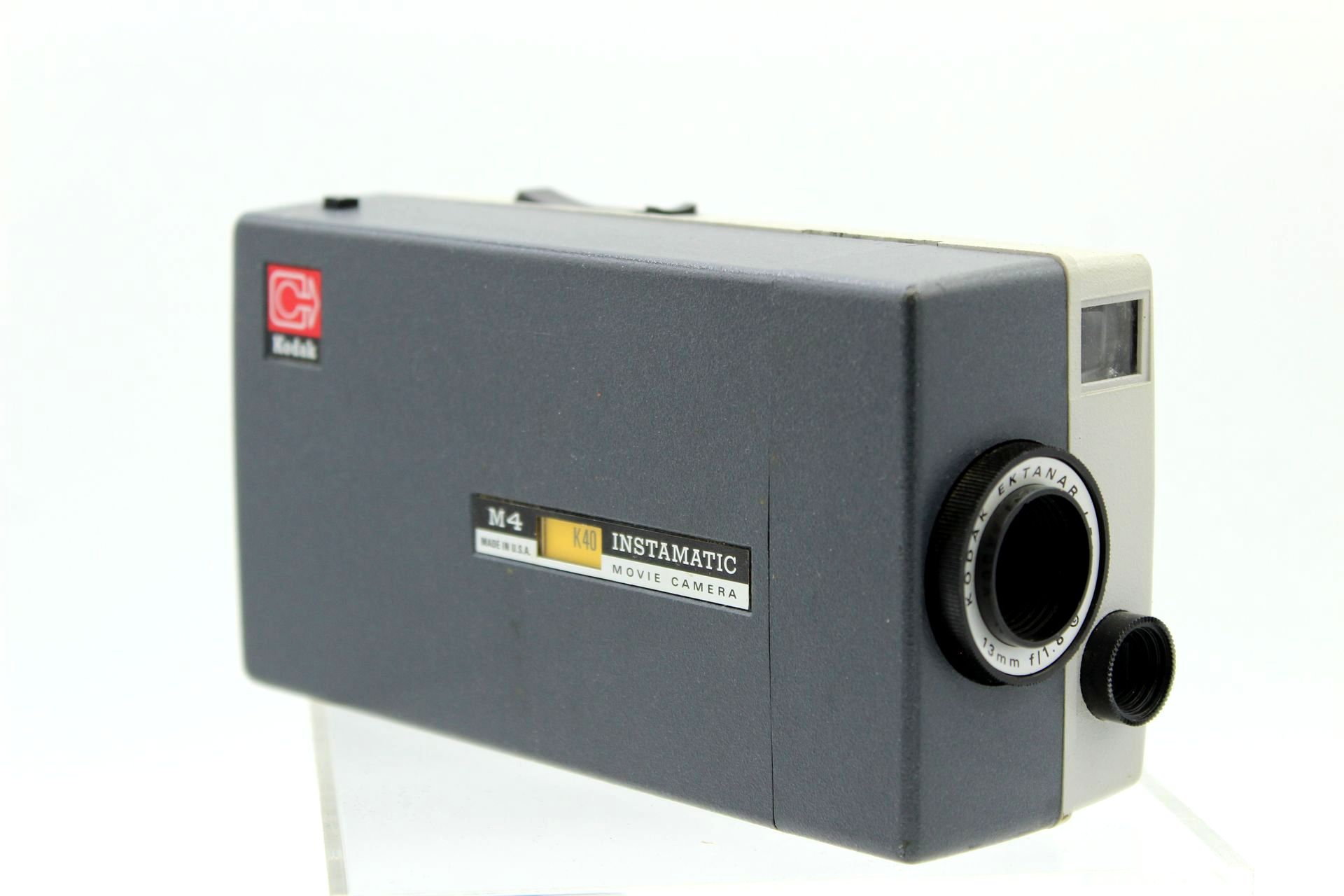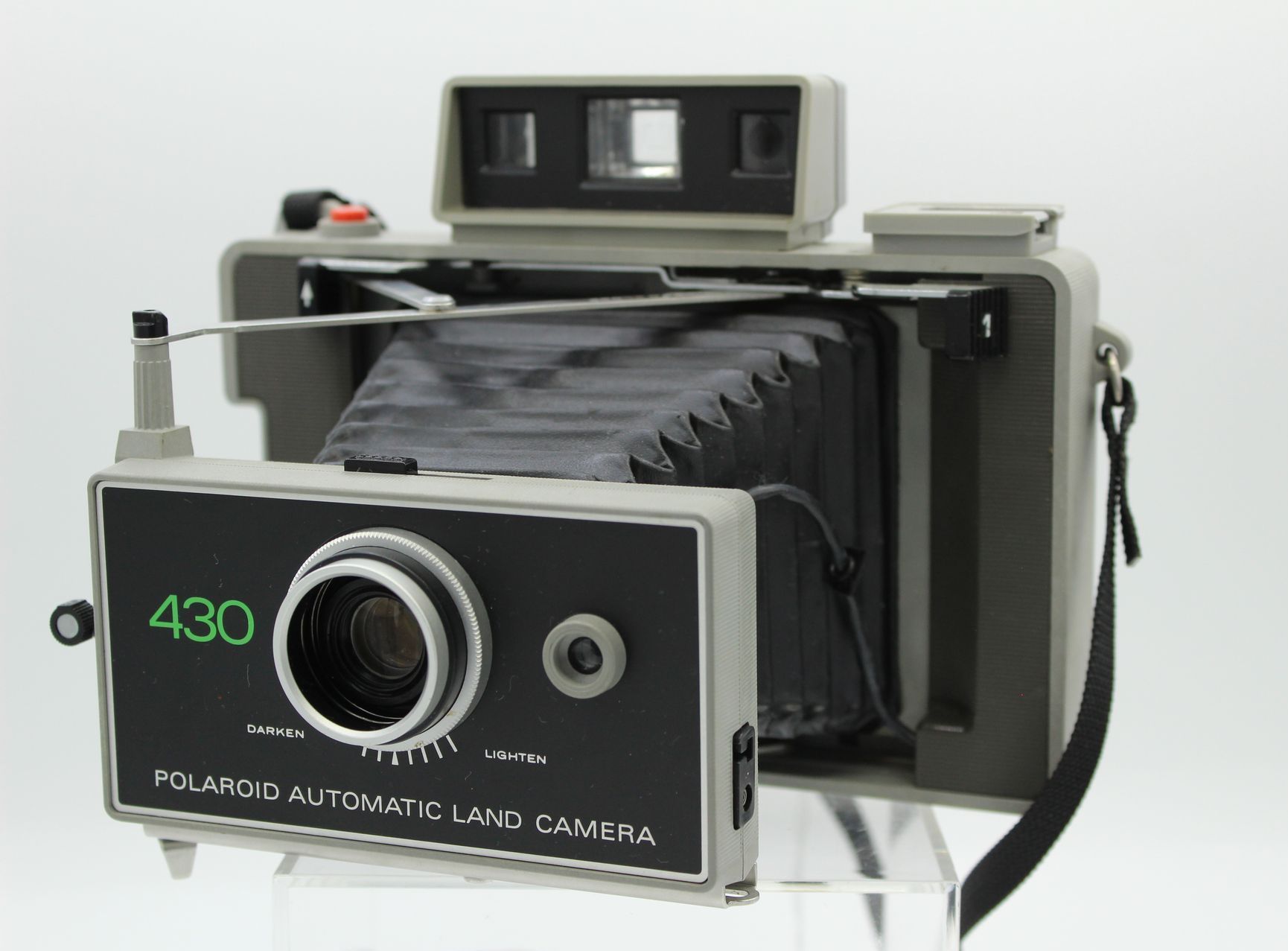The Rival Collection
Typically at the Argus Museum we showcase the cameras and stories around the Argus Camera Co. However, it’s hard to tell Argus’s full story without mentioning other cameras and companies. Argus was among the most popular cameras used by amateur photographers. They were the second largest manufacturer and distributor of cameras and equipment in the US during the 1950s, only to be beaten out by Kodak. It’s important to tell both sides of the story so that is why we would like to introduce you to the Rival Collection. It is made up of cameras from other companies that impacted the Argus story. From Kodaks to Poladroids, Agfas to Mamiyas, this display even features all of the Vokar cameras including a prototype that never made it to market.
Agfa Ansco Clipper Special
Agfa Ansco, 1939
Binghamton, New York
The Clipper Special was the top model in the Ansco Clipper line. The series began with the Agfa Ansco PD16 Clipper, but the Agfa branding was dropped during WWII. These cameras took 16 images on 616 film. It is also known as the Clipper Special 6.3, after the maximum aperture of its Agfa anastigmat lens. Unlike other models, this model offered a shutter with 4 speeds plus T and B; adjustable aperture, and lens focusing down to 4 feet. It retailed for $5 in 1941 by Montgomery Ward. Comparable to Argus 12.
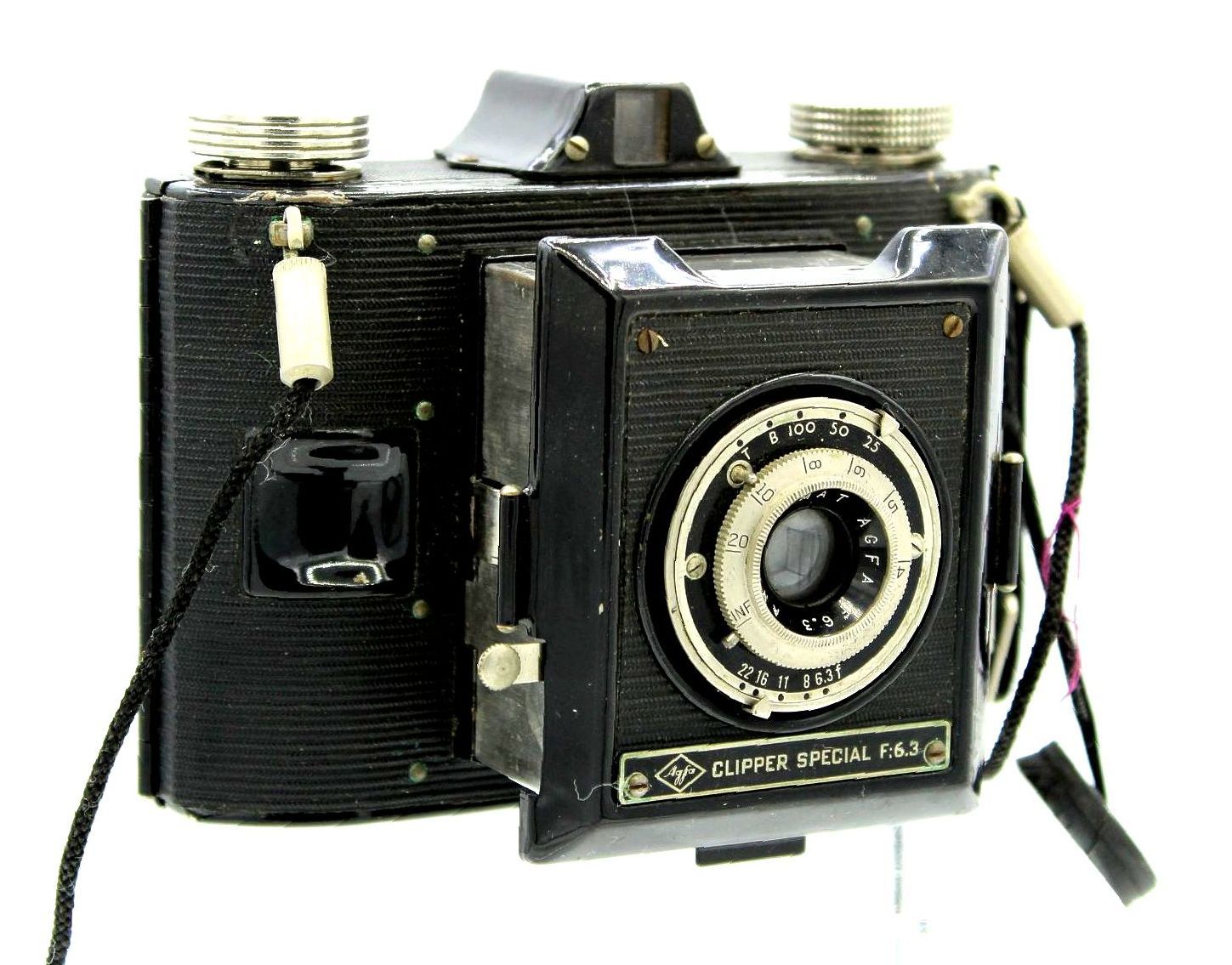
Ansco Memar Pronto
Agfa Ansco, 1954-1958
Binghamton, New York
The Ansco Memar was made by Agfa under the Ansco name and is the same camera as the first Agfa Silette. It is a simple, well-built 35mm camera with a optical viewfinder, a leaf shutter, a single action lever wind advance, and a flash socket in the front of the camera. It was sold at a suggested price of $39.95. The camera body was made of die-cast metal and covered in black leather. The exposed metal parts were finished in satin chrome. Comparable to Argus V-100.
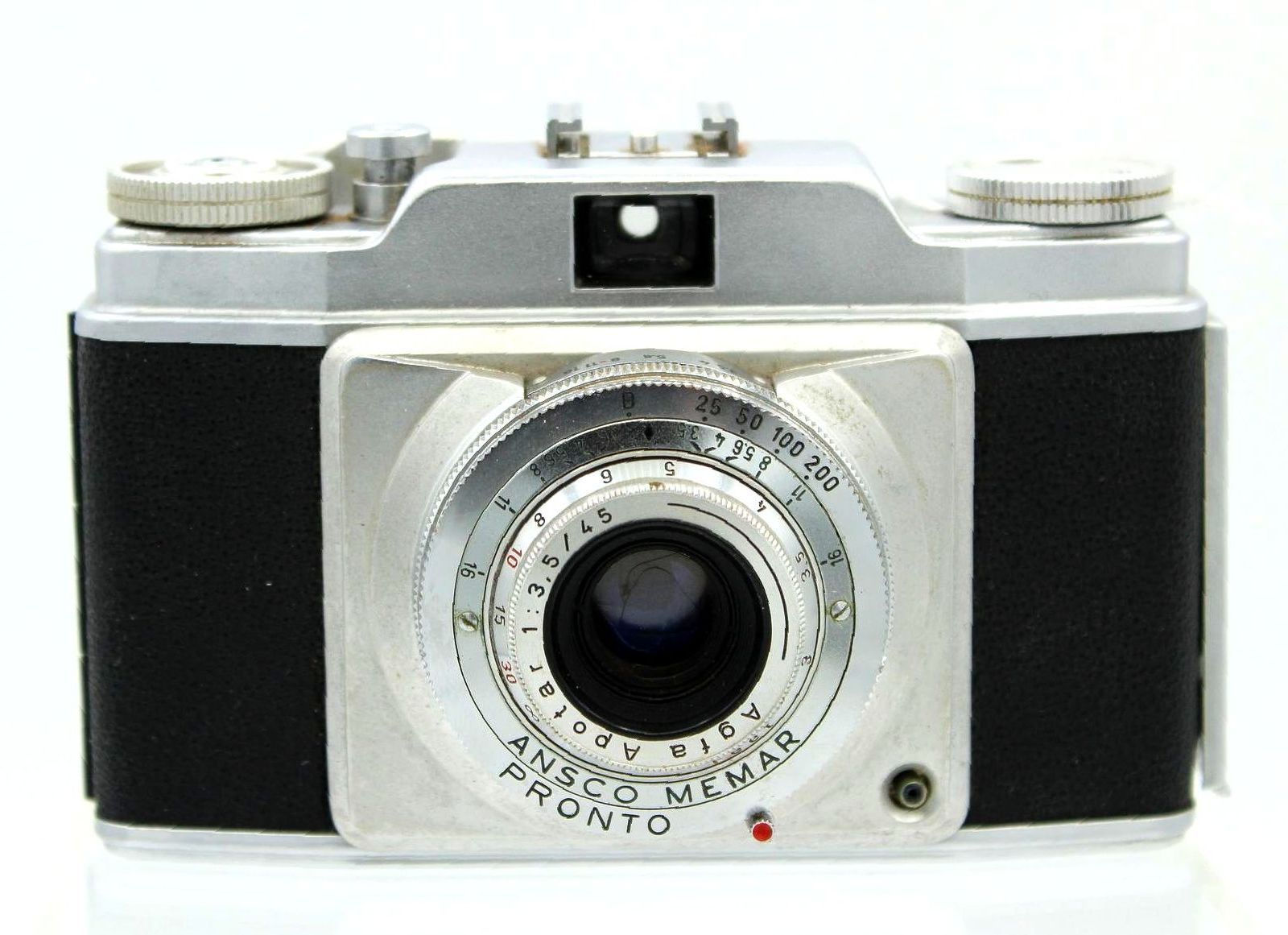
Kodak 35mm Rangefinder (RF)
Eastman Kodak Co., 1940
Rochester, NY
The Kodak 35 Rangefinder was an improved version of the Kodak 35 which was only released two years prior. It featured a superstructure housing containing a viewfinder and a separate rangefinder.It is unknown how well the 35 RF or Original did but the biggest competition was the Argus C3 which had been in production until 1966 and sold over a million copies. There was also a sizable retail difference between the Kodak and Argus coming in at $48 for the 35 RF or $25 for the C3.

Kodak Baby Brownie
Eastman Kodak Co., 1934-1941
Rochester, NY
This tiny Bakelite was designed by Walter Dorwin Teague who designed cameras, cars, radios and more. It features a prominent art deco style. It has a folding frame viewfinder and shutter release under the lens. It takes 8 pictures using 127 film and has a fixed aperture of f:16 and shutter speed of 1/50. When released, it retailed at only $1 and a carrying case was available for $.25 and the Special model cost only $1.25.

Kodak Retina IIa Type 016
Kodak AG, 1951-54
Berlin, Germany
The Kodak Retina IIa was created by Kodak AG, the German branch of Kodak. was a 35mm camera with a folding lens. Production began in 1939 to 1941 on the Type 150 model but had to stop production during World War II. Eventually, production began again in 1951 to 1954. It has a Schneider-Kruznach 3116960 Retina-Xenon 50mm f:2 lens. The smallest aperture available is f:16. It was priced at $168.

Kodak M4 Super-8 camera
Eastman Kodak Co., 1965-67
Rochester, NY
The Kodak Instamatic M4 Super-8 Movie Camera, was a revolutionary new 8mm movie camera marketed to everyday people. There were three models; the M2 was the basic model while the M4 came with an electric eye and the M6 was a zoom model. The prices ranged from just under $50 to $75 to $175. The camera used instant load cartridges that were easily popped in and out of the camera and didn’t require threading or winding film. Kodak even designed an Instamatic M70 movie projector that auto threaded film. Comparable to Argus Super-8 movie cameras.
Nishika 3-D N8000
Nishika Optical Systems, 1989
China
The Nishika 3-D N8000 is heavily based on the Nimstec Nimslo which was produced in the 1980s by Nimstec until it went bankrupt and bought by Nishika. The Nishika 3-D N8000 has four 30mm lenses with three aperture speeds. All four lenses are fired at the same time at a fixed shutter speed and each one exposes half a frame of 35mm film for a total of two frames per shot. Nishika eventually went under after a failed and fraudulent telemarketing scam to unload cameras on gullible Americans. Compared to Argus 3D Stereo Camera.
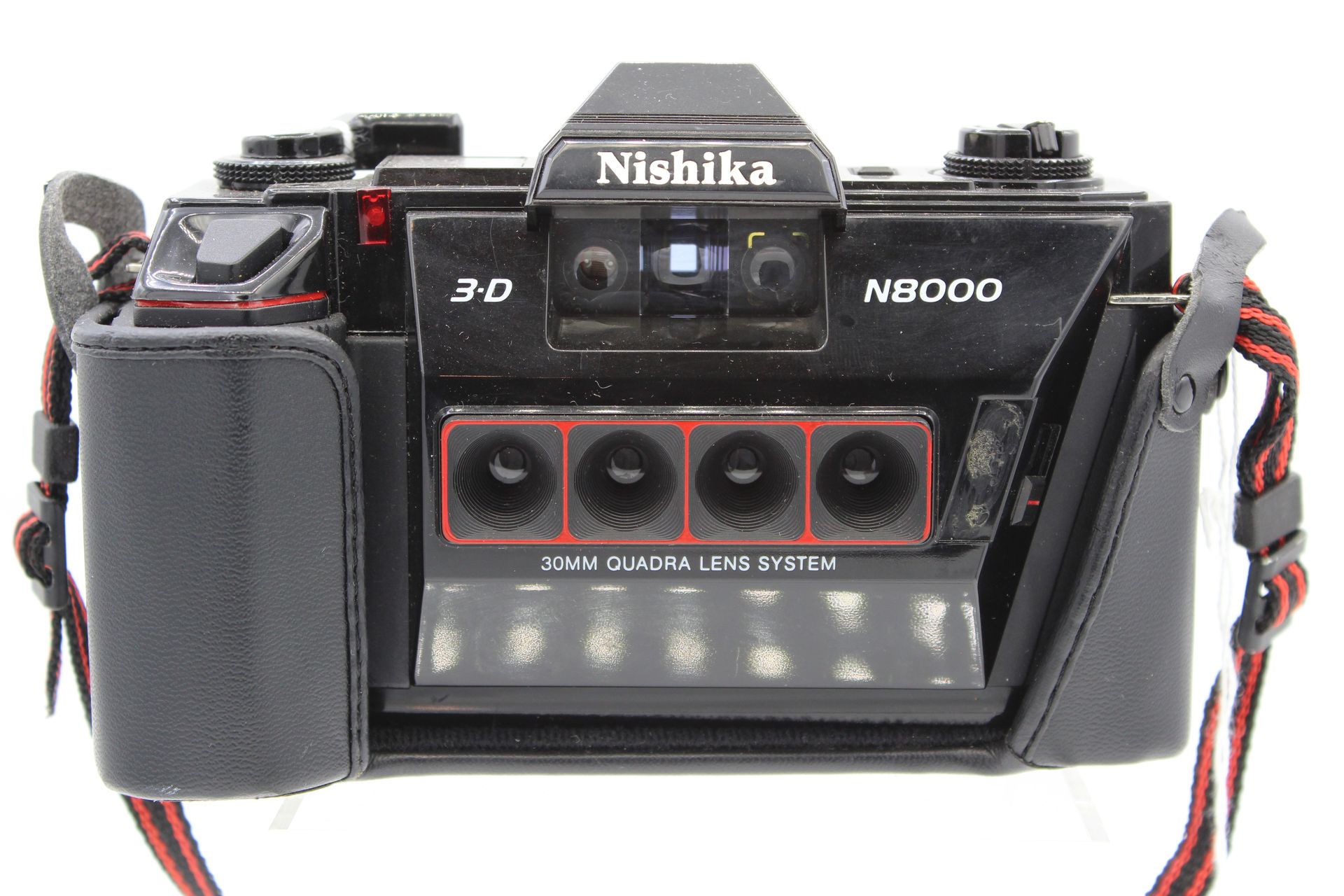
Vokar Model A
Electronics Products Manufacturing Corp, 1939
Ann Arbor, Michigan
Vokar was originally created by the recently ousted president of Argus in 1938, Charles Vershoor. The company formed and operated just a few blocks away from Argus until they eventually moved to Dexter, MI in 1943. The Vokar A was the first model produced from Electronics Products Manufacturing Corp. It is a simple Bakelite with two notably unusual features; the bottom-mounted wind knobs, and the “Variocoupled” exposure control. It has a fold out accordian style lens and a primitive popup viewfinder. It used 120 film and retailed at $15. Comparable to Argus A.
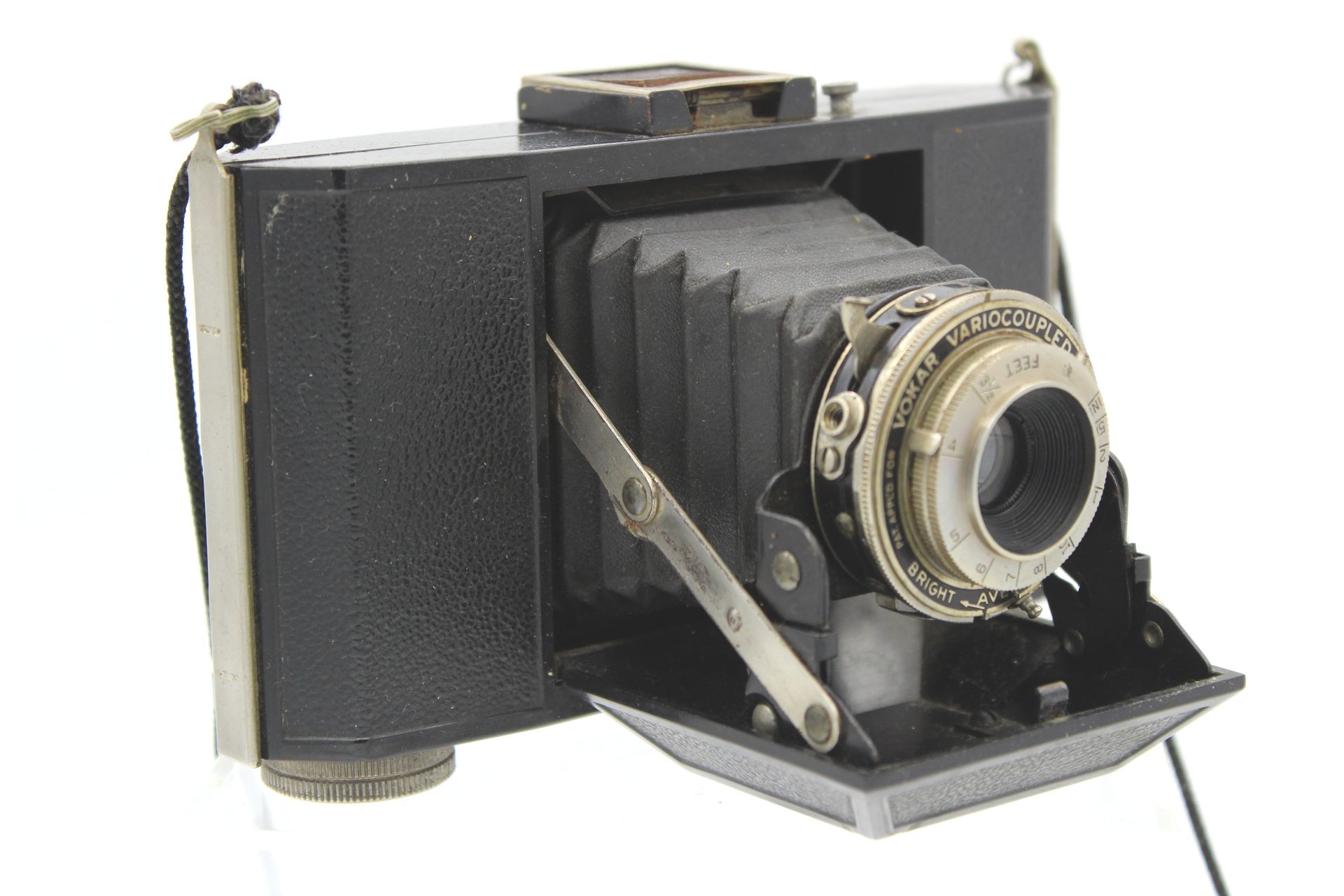
Vokar Model B Prototype
Electronics Products Manufacturing Corp, 1940-1
Ann Arbor, Michigan
This lesser known model of a Vokar B was most likely a prototype. It is similar to the Vokar A except it added chrome plates on the top and bottom for a more substantial appearance. The wind knobs are still on the bottom of the camera but the viewfinder is now fixed on top. The “Variocoupled” shutter and aperture was also abandoned for a Vokar-Ilex f:6.3 color corrected, triple anastigmat lens.
Comparable to Argus A.
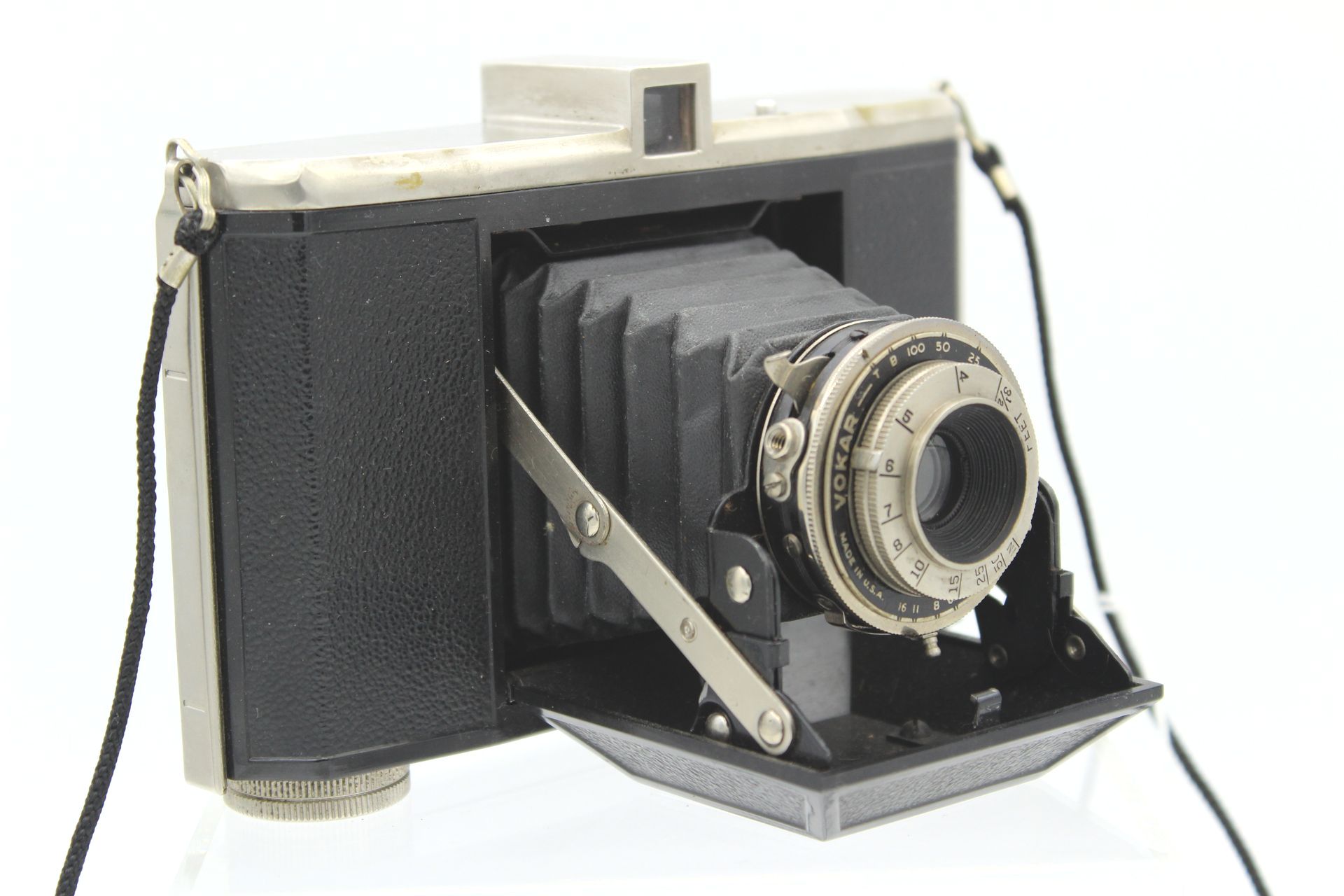
Vokar New Model B
Electronics Products Manufacturing Corp, 1941
Dexter, Michigan
Marketed as the All American DeLuxe Foldicam, it boasted 12 album size 2 ¼ x 2 ¼ pictures on 120 eight exposure film. This was the final product of the Vokar B and features the wind knobs on the top of the camera, instead of the bottom, with the fixed viewfinder. It has a Vokar-Ilex f:6.3 color corrected, triple anastigmat lens. It retailed at $16.50 and a case was available for an extra $5. Comparable to Argus A.
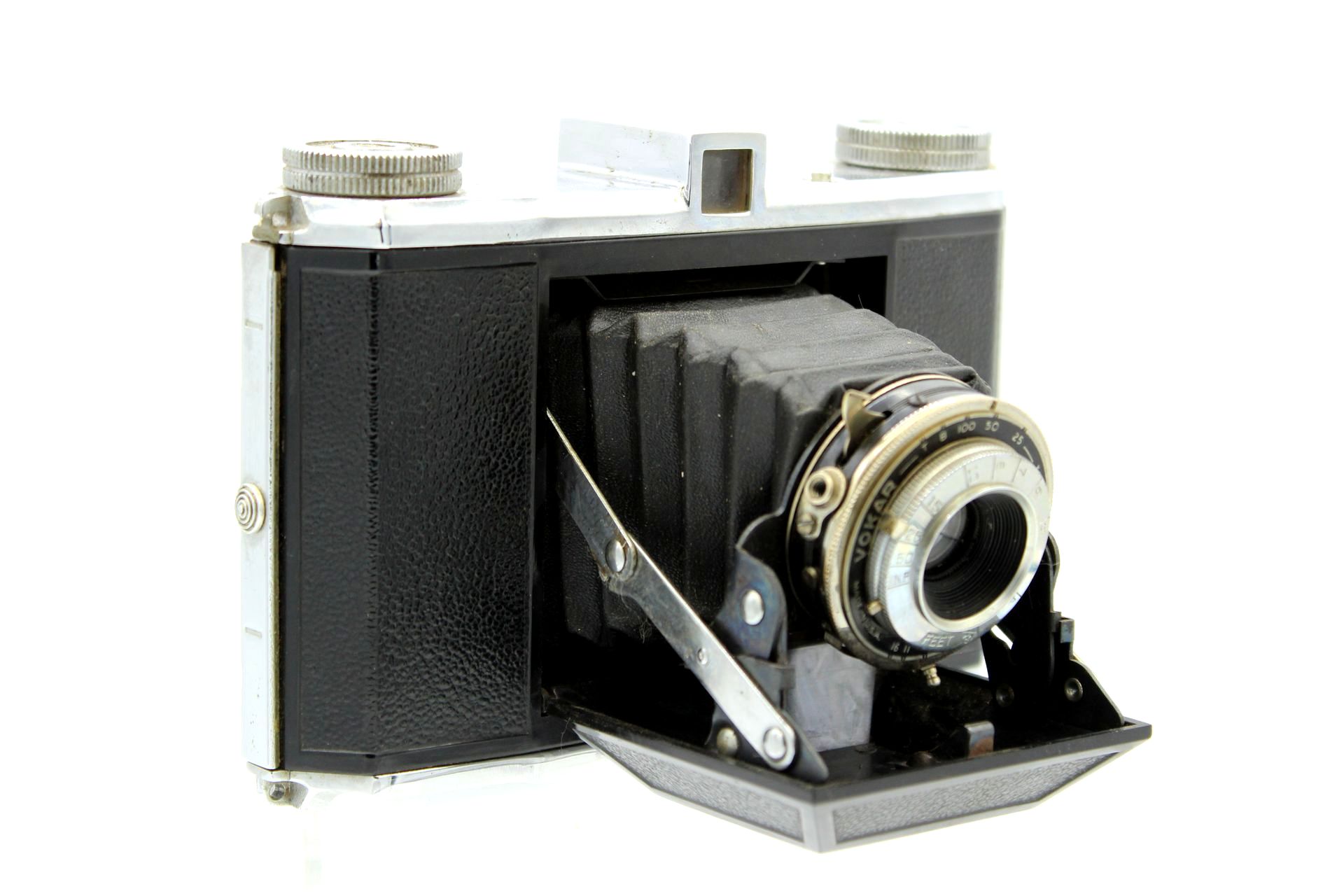
Vokar I
Electronics Products Manufacturing Corp, 1946
Dexter, Michigan
This Vokar model was designed by Richard Bills before WWII but during the war, the company diverted its resources to create bomb fuse components. The Vokar I finally debuted in 1946 at $76.70. Often compared to the Argus C3, this camera was sleek in design and offered a single-eyepiece framing and a rangefinder focus; shutter cocking coupled to the film advance; an f:2.8 lens; and a full range shutter speeds from 1 to 1/300 sec. Comparable to Argus 21 Markfinder.
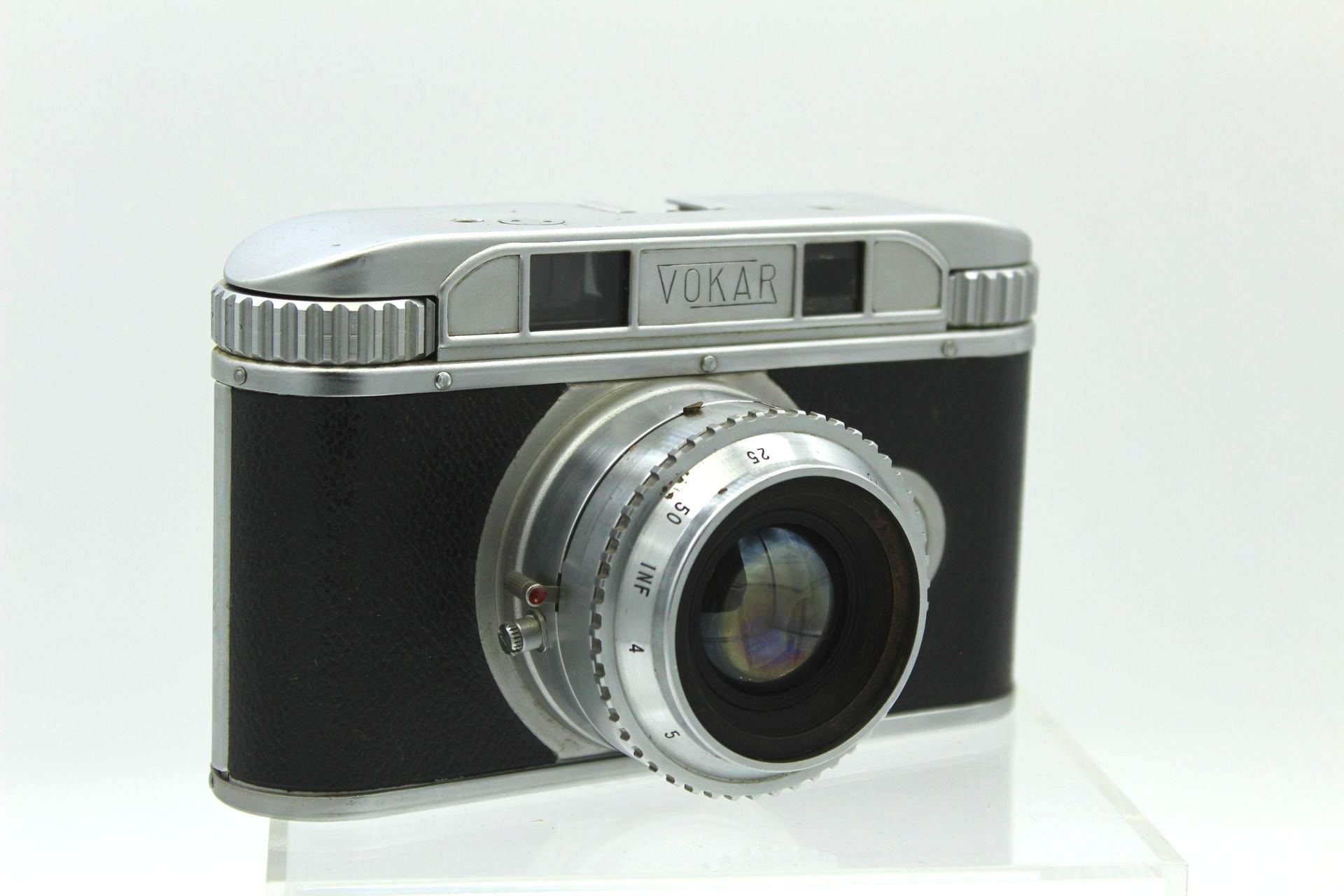
Vokar II
Electronics Products Manufacturing Corp, 1948
Dexter, Michigan
In 1948, the Vokar II made its debut but had very minor differences from the Vokar I. One change made was the name of the camera actually appeared on the leatherette face near the lens. The camera failed to make waves in the US market and advertising the camera became spotty. Sales were poor and the camera disappeared suddenly making it rare to find today. Comparable to Argus 21 Markfinder

Mansfield Automatic 127
Mansfield Industries, 1960s
Chicago, Illinois
Before purchasing Argus, Mansfield offered the Mansfield Automatic 127. The camera offered an automatic exposure system controlled by a built-in selenium cell exposure meter. It looks similar to the Argus Auto 35, made my Mamiya in 1962, as well as the Mamiya Towers 39 and 41 just with a more rounded top. Comparable to Argus 127.
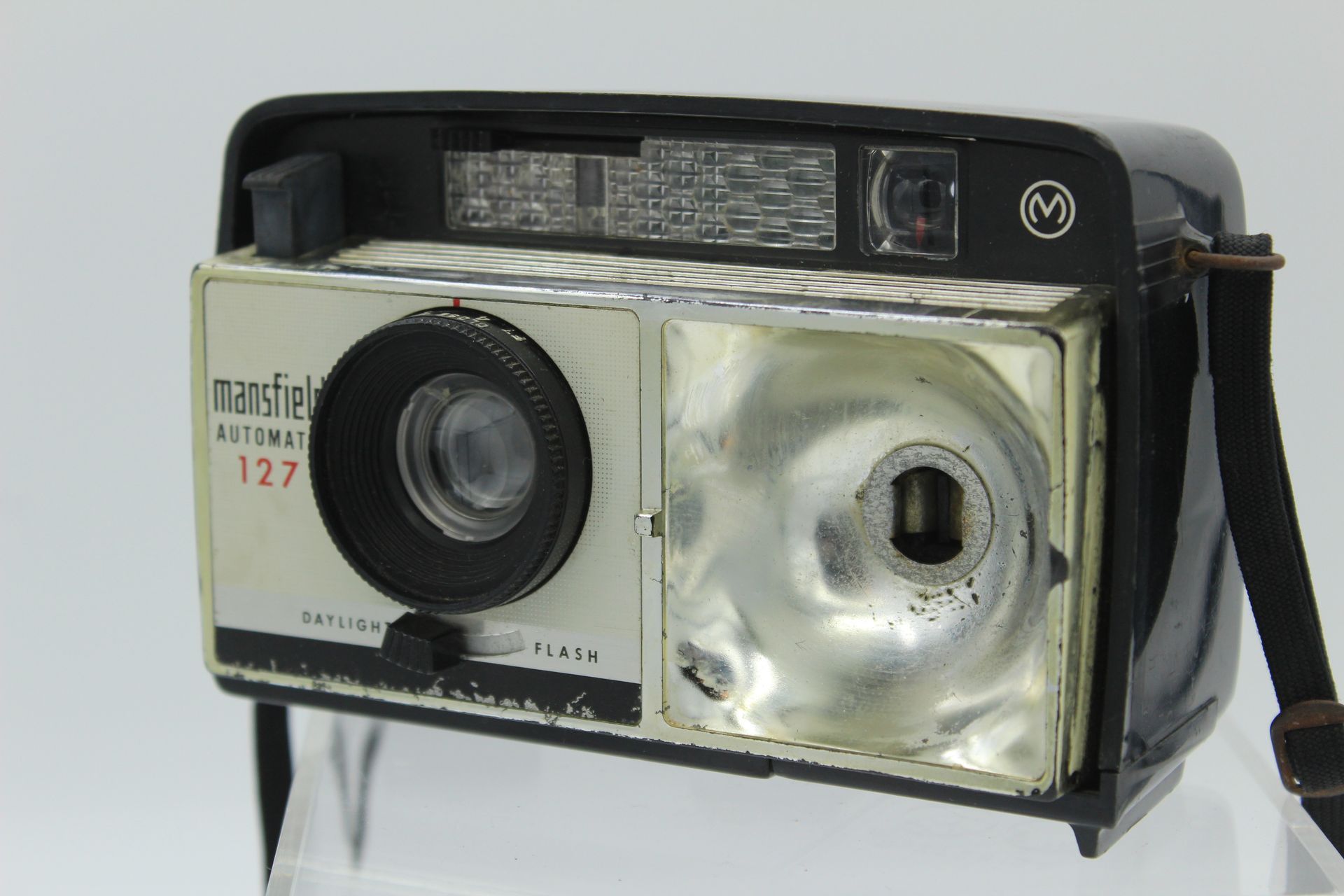
Mansfield Holiday Eye-Tronic 35
Mansfield Industries, ~1962
Manufactured by Mamiya, Japan -rebadged
This model was originally a Mamiya EE Super Merit but was also available as the Honeywell Electric Eye 35 in the US and a Vulcan in the UK. Around the time this camera was manufactured, Mansfield bought Argus Camera Co. and production in Ann Arbor ceased. Furthermore, several Mamiya models were branded “Argus” for sale in the US. The Eye-tronic featured a fixed 40mm lens, four different shutter speeds and an aperture range from f:2.8 to f:22. Comparable to Argus Auto 35.

Mamiya Tower 39
Mamiya, 1961
Japan
The Mamiya Automatic 35 EEF was the first Japanese camera to have a built-in flash beside the lens. This camera is more commonly found in its Sears model, the Tower 39 but was also offered as the Argus Auto 35 under Mansfield Industries. The lens is a Mamiya Kominar 45mm f:3.8. The focus scale has both distances and zone-focusing markings. Retailed at $39.47 with a case available for an extra $5.23
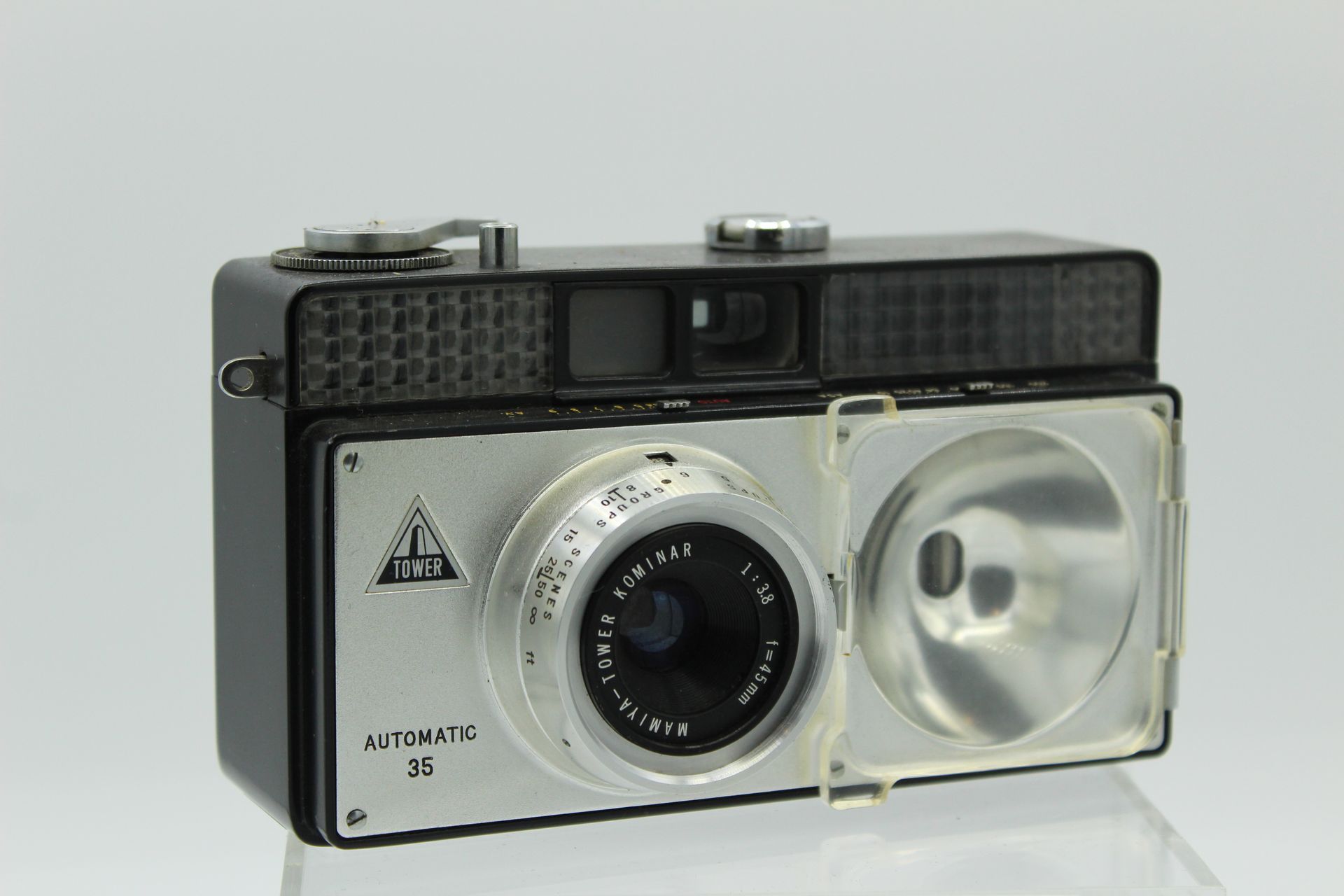
Mamiya Tower 41
Mamiya, 1961
Japan
The Mamiya Tower 41 was the same as the 39 except it had a rangefinder and it was never sold under Sears. It was also rebadged and available as an Argus Auto 35. The 41 was also faster with a 45mm f:2.8 lens. Stylistically, the 39 had a smooth chrome face while the 41 had a ridged matter black face.
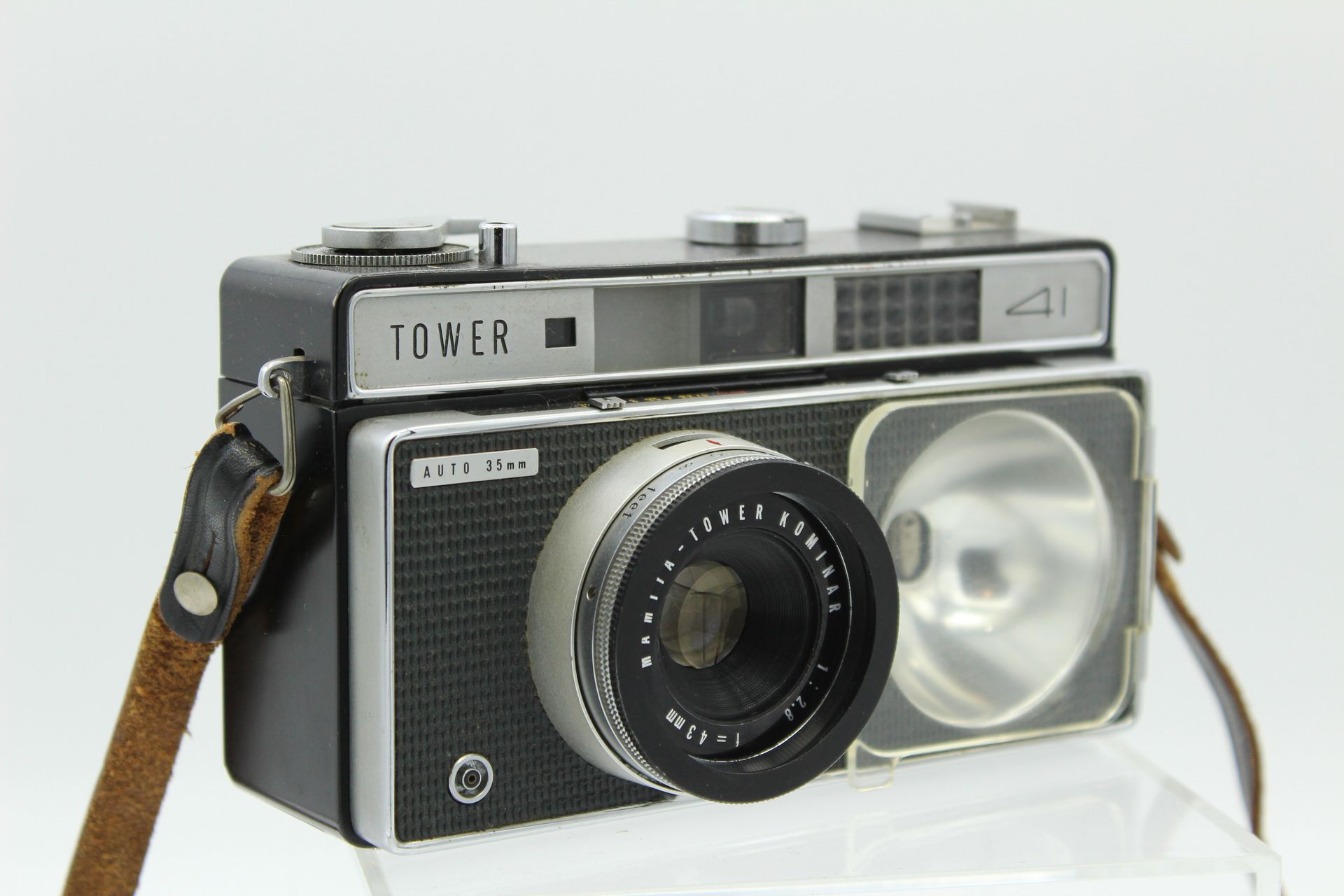
Polaroid 430
Polaroid, 1971-77
Cambridge, Massachusetts
The Polaroid 430 is a part of the Land Cameras series. They all share a few common features including folding bellows, automatic exposure, and use 100-series Packfilm. The 430 is a lower end model of the 100-400 series. It features a non-folding rangefinder with separate windows for framing and focusing, and a 3 element glass lens. The 430 also came with a hot shoe for the Polaroid Focused Flash. It retailed for $80 on release.
Polaroid SX-70
Polaroid, 1972-81
Cambridge, Massachusetts
The Polaroid SX-70 is a folding single lens reflex camera that can take five pictures in ten seconds. It was also considerably pricier than other Polaroids starting at $180. The SX-70 had sophisticated design elements including a collapsible design, complex light path for the viewfinder, precision plastic molding, and a body made of glass-filled polysulfone. Argus even designed a flash attachment for the camera some time after 1974.
